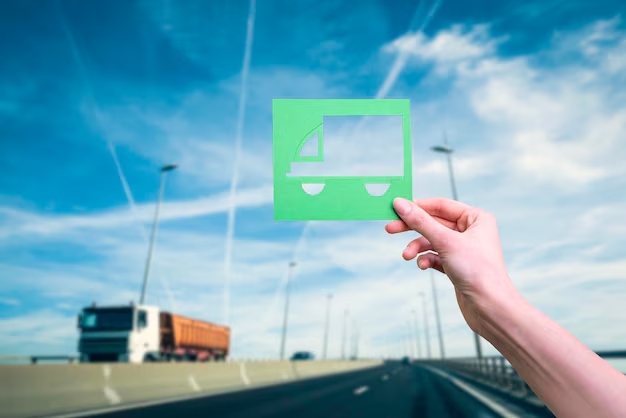How Climate Change Affects Freight Transport and What Measures Need to Be Taken


Let’s talk about the elephant in the warehouse: climate change is no longer a “future” problem for logistics. It’s here. Now. And it’s making things… complicated. You’ve probably seen it already — roads washed out after unseasonal rains, freight stuck at ports because of freak storms, temperature-sensitive cargo getting ruined mid-route, or drivers dealing with wildfires or +40°C heat that wasn't in any manual.
If you’re in transport and logistics, you’ve felt the shift. And the big question now isn’t whether climate change affects freight — it’s how badly, how often, and what the hell we do next.
1. First, what’s actually happening?
Forget the headlines for a second — let’s talk real-world stuff:
- More extreme weather — sudden snow in March, floods in June, heatwaves in October. Hard to plan for, even harder to drive through.
- Disrupted infrastructure — bridges under repair more often, heat-buckled rails, storm-damaged ports.
- Unpredictable seasons — harvesting and production cycles are shifting, and that messes with logistics planning big time.
- Higher fuel costs and regulations — many countries are now taxing emissions or setting carbon reduction targets. Good for the planet, sure — but a moving target for freight costs.
In short: the environment isn’t cooperating anymore. And your supply chain has to work around that.
2. What’s the actual impact on delivery?
Here's what operators and shippers are dealing with on a weekly basis (not even exaggerating):
- Delays due to rerouted or closed roads
- More damage to cargo, especially food and chemicals, from temperature swings
- Driver fatigue and safety risks in extreme conditions (ever tried driving 800 km with no AC in 38°C heat?)
- Insurance premiums climbing after every major weather event
- Warehousing issues — moisture damage, power outages, or cooling failures during blackouts
And the kicker? A lot of this doesn’t show up in a traditional KPI report. It shows up in stressed-out staff, apologetic emails to clients, and delivery windows that keep stretching.
3. Okay, so what can we actually do?
We can’t fix the climate overnight — but we can adapt our logistics game to deal with it better. Here’s how.
A. Build weather into the planning process
Not just "check the forecast" — actually integrate real-time weather data into route optimization and TMS platforms. Delay a load before the storm hits, not after.
B. Rethink equipment and vehicle choice
More insulated containers. Better reefer units. EV trucks where heat zones are intense (they perform better in stop-start traffic anyway). Review your fleet with a climate lens.
C. Redesign routes and hubs for flexibility
Don’t rely on one port, one lane, or one road in/out of a critical facility. If a flood or wildfire takes that out — do you have a Plan B? Or C?
D. Train teams for climate risk, not just safety
Drivers need to know how to deal with heatstroke symptoms, or where to stop during a tornado alert. Warehouse managers should have blackout and flood protocols. This isn’t just “nice to have” anymore.
E. Add time buffers — and tell your clients why
Build in more realistic ETAs during climate-sensitive seasons (which, let’s face it, is most of them now). Clients will understand. Silence, however? That gets expensive fast.
4. What about long-term changes?
Ah yes, the part where we get serious about sustainability. You don’t have to overhaul everything overnight, but if you’re not at least starting to:
- Reduce empty runs
- Improve load efficiency
- Explore modal shifts (hello, rail and inland waterway)
- Track emissions and fuel use
- Talk about carbon offsets or green logistics goals
...then you’re going to be playing catch-up. And let’s be honest — customers, investors, and regulators are all watching.
Quick example — because this stuff is real
One midsize logistics firm in Southern Europe had a warehouse near a river — beautiful location, solid infrastructure. Until three years of “once-in-a-century” floods hit back-to-back. After the second time mopping up pallet floaties, they moved critical goods to a nearby elevated site. More cost upfront, but guess what? During last year’s storm season, they kept moving while competitors were underwater (literally). Sometimes the climate warning doesn’t come in a report — it comes with mud.
Final thought: logistics is adapting — fast. You should too.
Climate change isn’t a distant risk anymore. It’s a constant, unpredictable variable. And your logistics plan has to treat it that way. You can’t just react to chaos after it hits. You need systems, tools, and thinking that assume disruption — and route around it before it causes damage.
The good news? Logistics people are good at adapting. We always have been. We just didn’t think we’d be adapting to a melting planet. But here we are. So let’s build smarter, plan tighter, and drive better — before the next storm hits.

